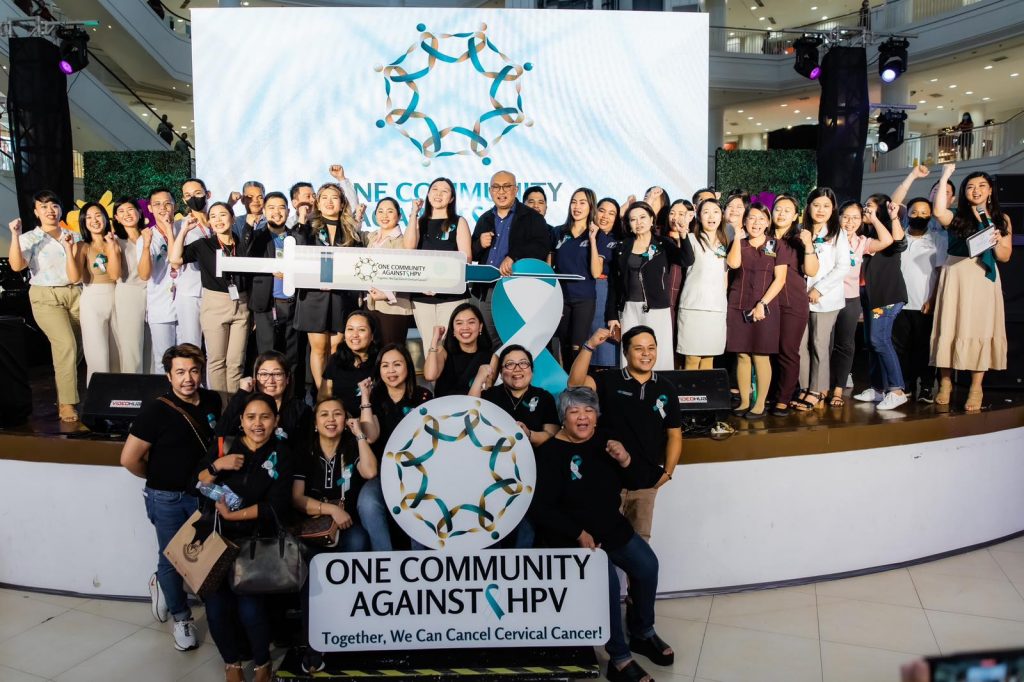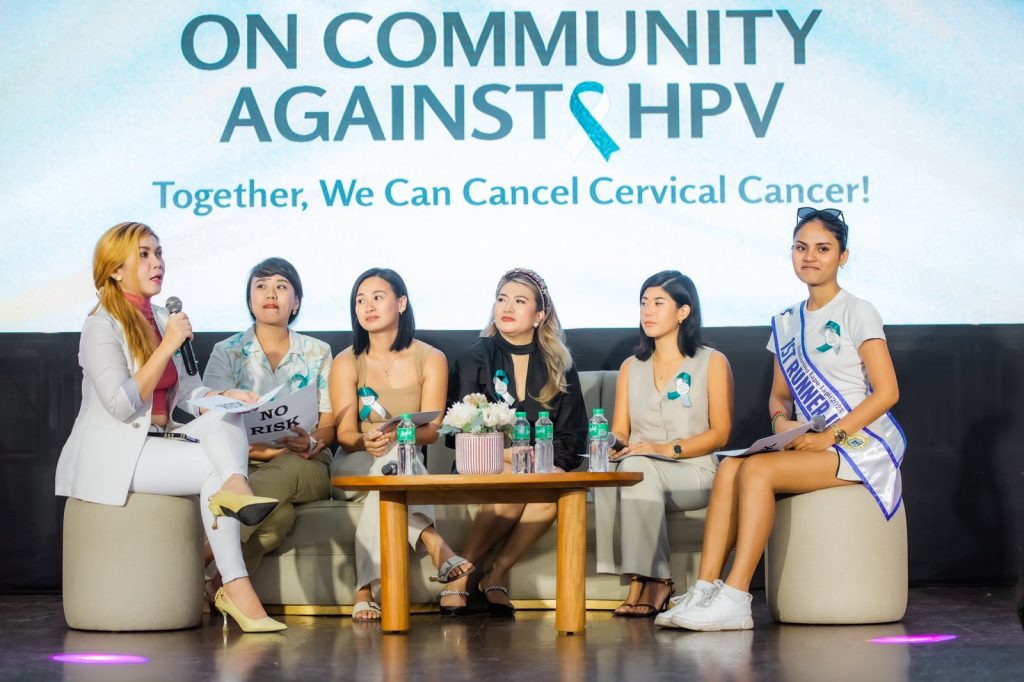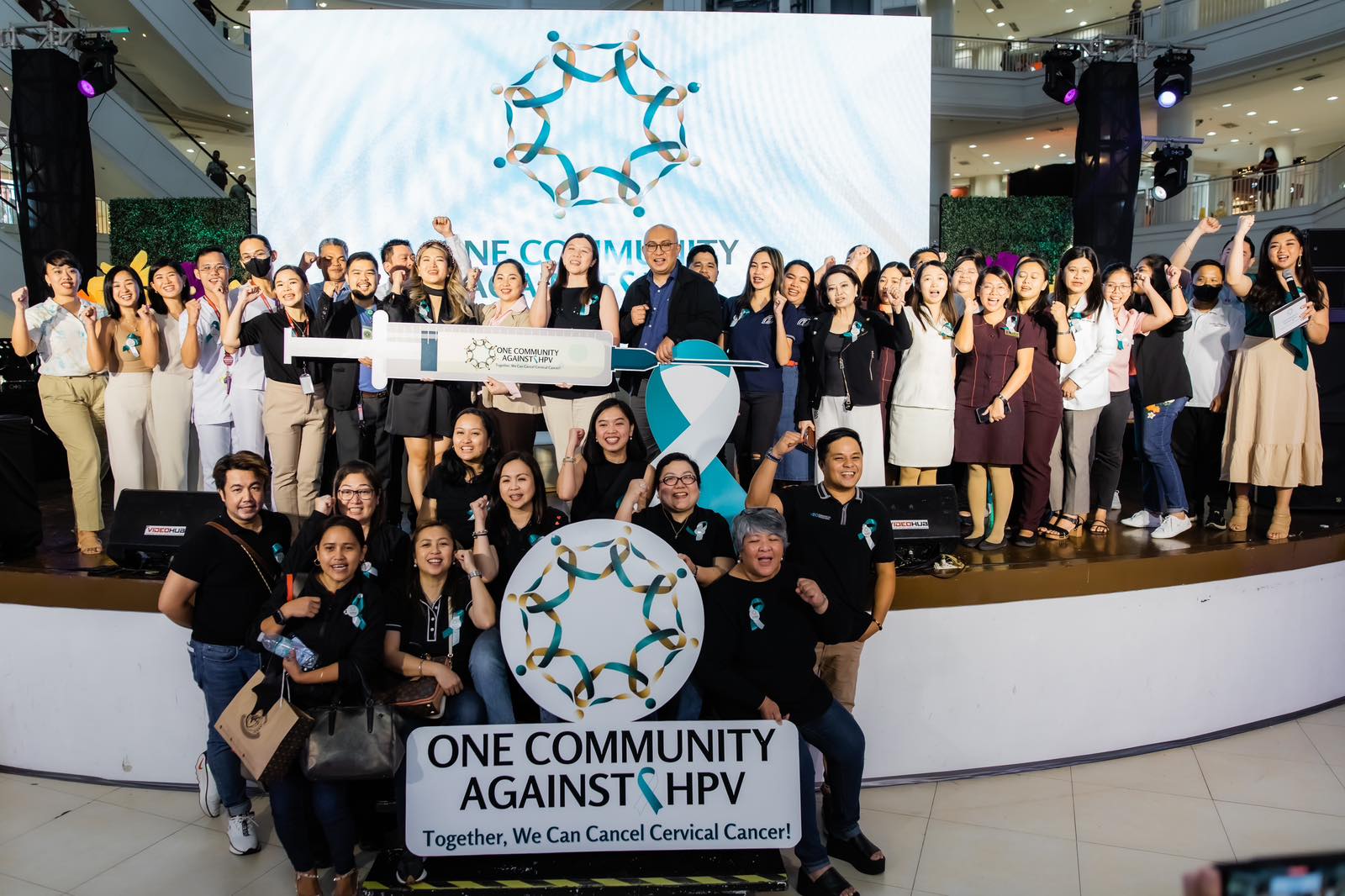Cebuano women including beauty queens, healthcare professionals, and advocates came together to raise awareness and fight against cervical cancer during the “One Community Against Cervical Cancer: Together We Can Cancel Cervical Cancer” event hosted by healthcare company MSD in the Philippines at Ayala Center Cebu.
Healthy women are the backbone of a resilient, stable, and thriving society. By encouraging women to invest in their health and protect themselves from diseases like HPV and cervical cancer they are empowered to create a promising future not only for themselves but for the people around them.

Unveiling unity at Ayala Center Cebu: Advocates, doctors, and key opinion leaders join forces against cervical cancer. One Community, One Cause.
Dr. Stephanie Mesina-Veneracion, an obstetrician-gynecologist, highlighted that cervical cancer can be eradicated through vaccination. In the Philippines, approximately almost 8,000 women are diagnosed with cervical cancer each year, and about 11 of them die. The disease is the second most common cancer among Filipino women during their prime years (ages 15 to 44). Precancerous lesions can be detected through screening methods like papsmear, and while most women can avoid developing cancer, 3-5% of them may not.
“Do you know that this is a silent pandemic! And you are not even aware of it,” said Veneracion.


Dr. Stippie Mesina enlightens minds at Ayala Center Cebu! Engaging forum on Cervical Cancer Risk or No Risk – knowledge is power in the fight against cervical cancer.
HPV or human papillomavirus, a common sexually transmitted infection, is the leading cause of cervical cancer. This disease can be prevented by HPV vaccination, which can be done in various channels: hospitals, clinics, pharmacies, and local health centers. The event aimed to unite the community to CancelCervicalCancer by promoting shared responsibility, awareness, and collaboration.
Apart from cervical cancer, HPV can also cause genital warts and other cancers, including cancer of the vulva, vagina, penis, or anus. It can also cause cancer in the back of the throat (called oropharyngeal cancer).
The Department of Health (DOH) in Central Visayas, represented by Ruff Vincent Valdevieso, the National Immunization Program nurse coordinator, is ensuring that children, particularly females, receive vaccinations to protect against HPV-related diseases. He said they have coordinated with various stakeholders to provide free vaccines, which are readily available at public health centers. Children of all genders aged 9 to 14 can receive the vaccines to be protected against HPV infections that can lead to cancer later in life. Teens and young adults up to the age of 26 who haven’t started or finished the vaccine series are also encouraged to get vaccinated. Meanwhile, women up to age 45 may be eligible for vaccination after discussing with their healthcare provider.
Adolescents aged 9 to 14 receive two doses of the vaccine, while young adults aged 15 to 26 receive three doses.
Veneracion said that studies have shown that the vaccine provides better protection when given to younger individuals and before exposure to HPV.
Dr. Jera Armendarez, head of the Non-Communicable Disease Section at DOH-7, said the DOH is conducting mass screenings for women and has provided testing kits to areas where individuals may be hesitant to undergo papsmears. The Minglanilla District Hospital is piloting this program with positive results so far.
Pharmacist Elizabeth Tan elaborated on pharmacy-based immunization and said HPV vaccination is available in community pharmacies, with 750 trained and certified pharmacists available to administer them.

Panelists take the stage at Ayala Center Cebu, passionately championing HPV awareness. Together, we raise our voices to cancel cervical cancer.
The aim is to eliminate cervical cancer by reducing the number of cases to a level where it is no longer a major public health concern. This means having fewer than 4 cases per 100,000 women per year, according to the World Health Organization (WHO). To achieve this, countries should aim to reach three main targets within the current young generation’s lifetime. These targets include ensuring that 90% of girls receive the HPV vaccine by age 15, having 70% of women screened with an effective test between ages 35 and 45, and ensuring that 90% of women with pre-cancer receive treatment and 90% of women with invasive cancer receive proper management. It will require collaboration from society’s various sectors and a focus on women’s health. Raising awareness, providing education, and offering social support at all levels, from individuals to government agencies, is crucial.
Taking action now can save many lives, and global research suggests that if these interventions are widely implemented and maintained with high coverage by 2030, cervical cancer could be eliminated in most countries by 2120, preventing over 63 million deaths of women worldwide.
